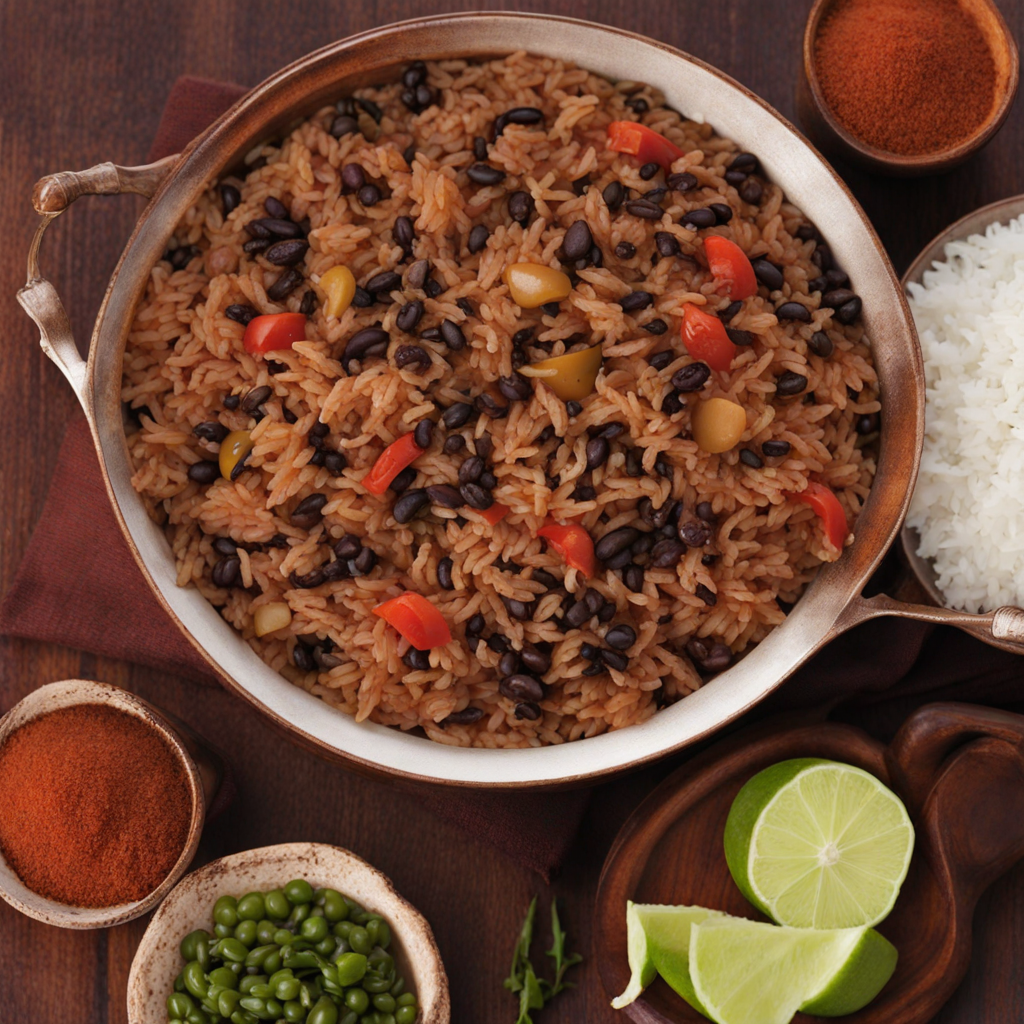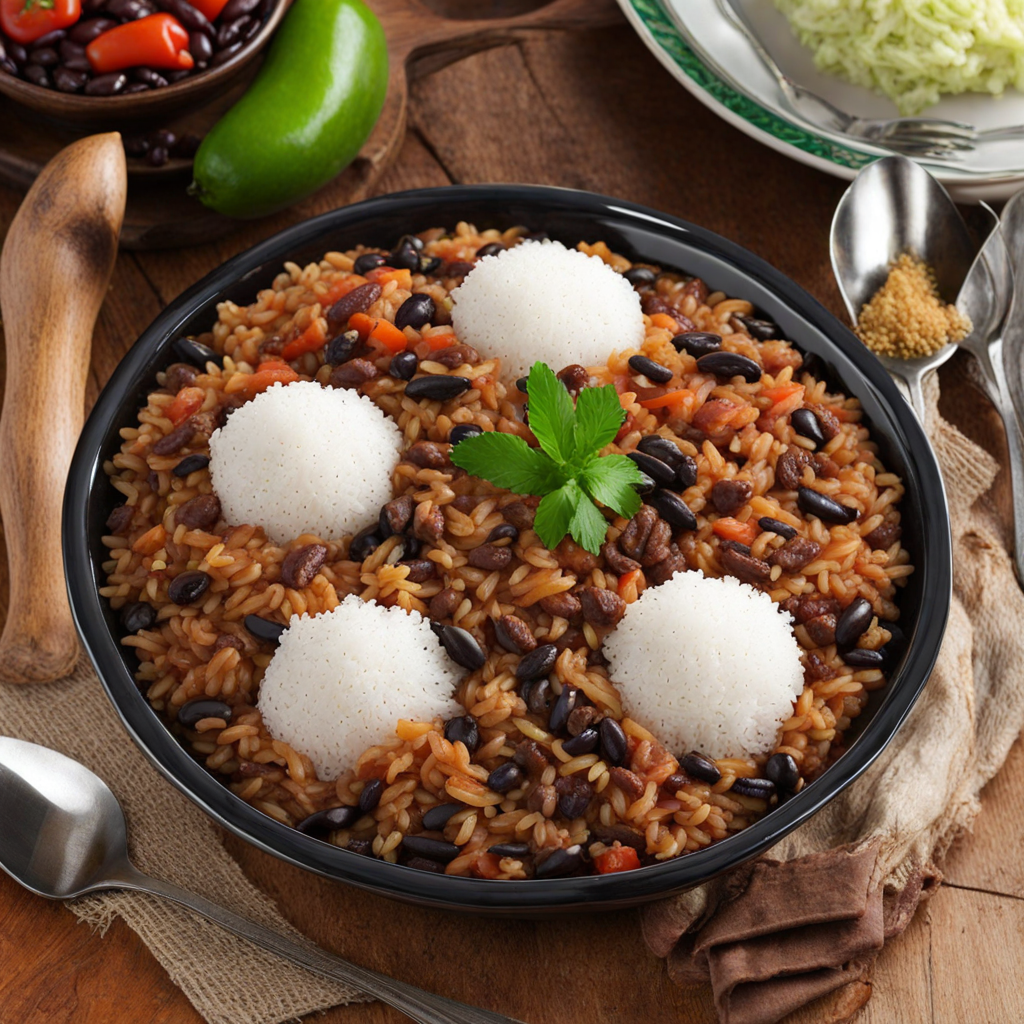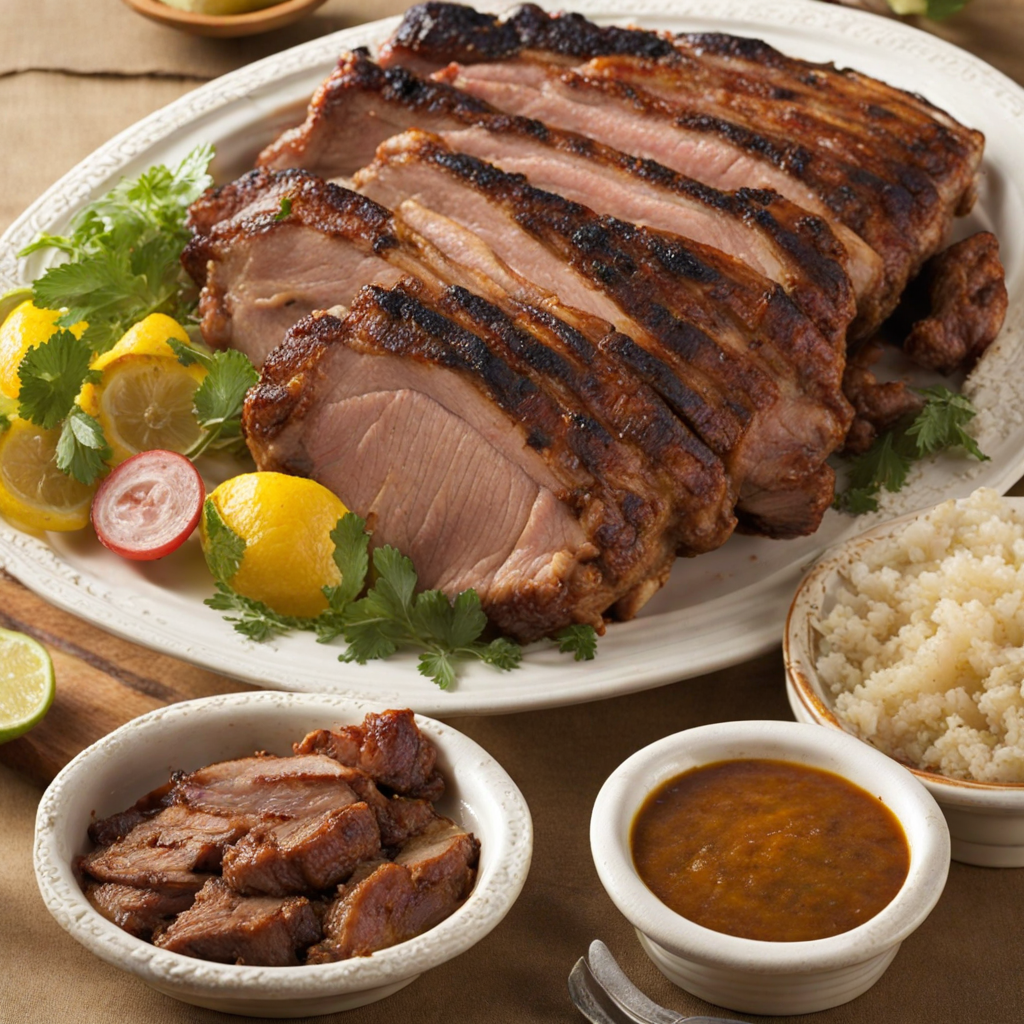Congri
Congri is a traditional Cuban dish that beautifully marries the earthy flavors of black beans and rice, creating a hearty and satisfying meal. The dish is distinguished by its use of long-grain white rice, which is cooked with black beans, often incorporating a mix of spices and aromatic ingredients that enhance its flavor profile. The rice is typically cooked together with the beans, allowing the two to meld and absorb each other's flavors, resulting in a dish that is both comforting and deeply satisfying. What sets Congri apart is the inclusion of sofrito, a fragrant base made from sautéed onions, garlic, bell peppers, and tomatoes. This mixture is essential for building the dish's complex flavors. Additionally, it often features spices such as cumin and bay leaves, which infuse the rice and beans with a warm, earthy aroma. Some variations may include meats like pork or chicken, adding an extra layer of richness and depth to the dish. The combination of textures—from the tender rice to the creamy beans—creates a delightful eating experience. Congri is not just a dish; it is a celebration of Cuban culinary heritage. Often served alongside fried plantains or a fresh salad, it embodies the vibrant spirit of Cuban cuisine. Its versatility makes it suitable for both casual family dinners and festive occasions. As you savor Congri, you'll find yourself immersed in the flavors and traditions of Cuba, making it a must-try for anyone seeking new culinary adventures.
How It Became This Dish
The History of Congri: A Culinary Icon of Cuba #### Origins of Congri Congri, a traditional Cuban dish, embodies the rich tapestry of the island’s culinary heritage. At its core, Congri is a delightful combination of rice and black beans, often flavored with spices, herbs, and sometimes meat, particularly pork. Its name is derived from the African word "congrí," which reflects the dish's deep-rooted connections to the island’s Afro-Cuban culture. The origins of Congri can be traced back to the early days of colonization and the African diaspora. During the 16th century, as the Spanish colonizers settled in Cuba, they brought with them not only their culinary traditions but also enslaved Africans who introduced their own food practices. The combination of Spanish and African ingredients and cooking techniques led to the creation of a unique culinary landscape. Rice, a staple ingredient in many Caribbean cuisines, was introduced to the Americas by the European colonizers, while black beans, native to the region, became a vital part of the diet. The melding of these ingredients, along with the incorporation of spices, herbs, and the use of cooking methods from both cultures, laid the groundwork for what would evolve into the beloved dish known as Congri. #### Cultural Significance Congri is more than just a dish in Cuba; it is a symbol of national identity and cultural pride. In many households, it is a staple food, often served during family gatherings, celebrations, and significant events. The dish is particularly popular in Eastern Cuba, where it is frequently enjoyed alongside roasted meats, particularly lechón (roast pork), with which it pairs exquisitely. The preparation of Congri is often seen as a communal activity, bringing families and friends together in the kitchen. It is a dish that reflects the spirit of sharing and togetherness, embodying the warmth of Cuban hospitality. Furthermore, Congri is often associated with celebrations, such as New Year’s Eve, when families gather to enjoy a feast that symbolizes prosperity and abundance for the coming year. In addition to its role in family and social gatherings, Congri has also made its mark in Cuban history. During the revolutionary period in the mid-20th century, the dish became a representation of the working-class struggle, as it was an affordable and filling meal that could be enjoyed by all. It is often served in schools and government institutions, reinforcing its status as a national dish. #### Development Over Time Over the years, Congri has evolved, adapting to changes in society, availability of ingredients, and culinary trends. Initially, the dish was made primarily with black beans, but as Cuban cuisine expanded and diversified, variations began to emerge. One of the most notable is "Moros y Cristianos," a dish that separates the rice and beans, cooking them separately but serving them together. The name symbolizes the historical conflict between Moors and Christians, a metaphor that reflects the blending of cultures in Cuba. The traditional recipe for Congri typically includes long-grain white rice, black beans, garlic, onions, bell peppers, and spices like cumin and oregano. Some variations incorporate bacon or pork for added flavor and richness. The dish is often cooked in a single pot, allowing the flavors to meld beautifully. The technique itself is a testament to the resourcefulness of Cuban cooks, who have perfected the art of creating hearty meals from simple ingredients. Congri has also been influenced by the Cuban diaspora, as Cuban immigrants carried their culinary traditions with them to different parts of the world, particularly the United States. In cities like Miami and New York, Congri has become a beloved dish within Cuban-American communities. Restaurants specializing in Cuban cuisine often feature Congri on their menus, introducing the dish to new audiences while maintaining its traditional roots. The rise of the health-conscious movement in recent years has also impacted how Congri is prepared and served. While traditional recipes lean heavily on fats from meats, modern adaptations often use less oil and incorporate more vegetables, appealing to a broader range of dietary preferences. Vegan and vegetarian versions of Congri have emerged, utilizing plant-based proteins and alternative ingredients while retaining the dish's essence. #### Conclusion Congri is a testament to the resilience and creativity of Cuban culture. It is a dish that has stood the test of time, adapting to social changes and evolving tastes while remaining deeply rooted in the island's history. From its origins in the fusion of African and Spanish culinary practices to its status as a national symbol, Congri represents the essence of Cuba—a melting pot of cultures, flavors, and traditions. Its significance extends beyond the dinner table, resonating with themes of community, celebration, and identity. Whether enjoyed at a family gathering, a festive celebration, or a cozy dinner at home, Congri continues to bring people together, offering a taste of Cuba's rich heritage and vibrant spirit. As we savor this beloved dish, we not only indulge in its flavorful goodness but also honor the generations of Cubans who have passed down their culinary traditions, ensuring that Congri remains a cherished part of Cuban life for years to come.
You may like
Discover local flavors from Cuba







